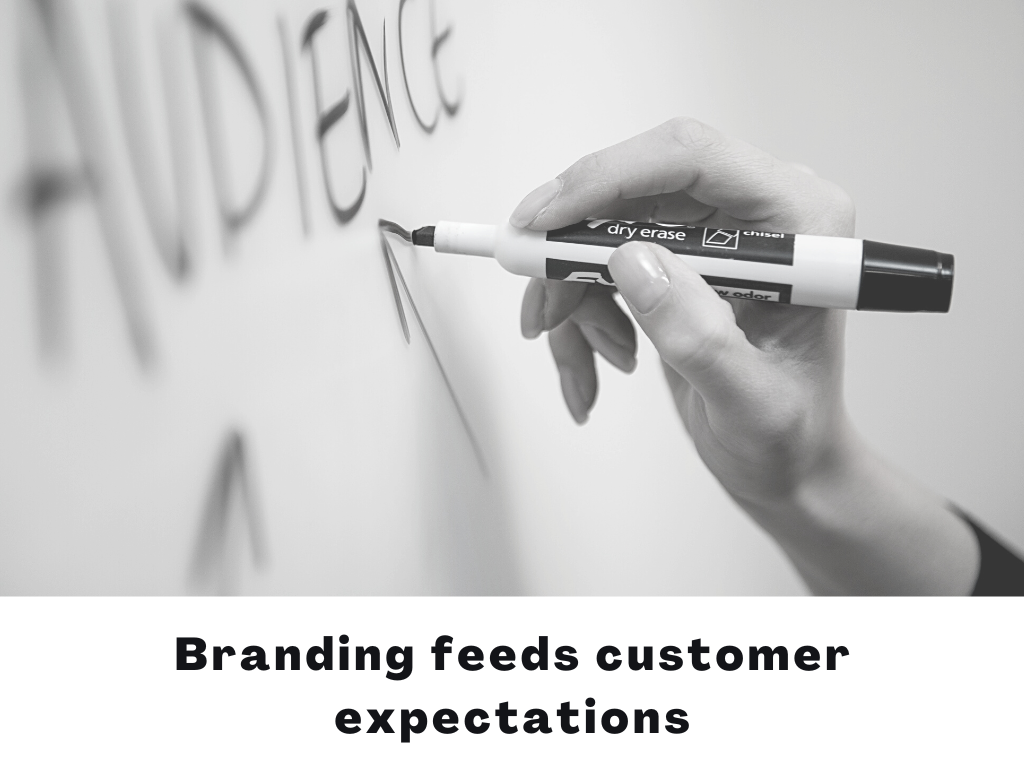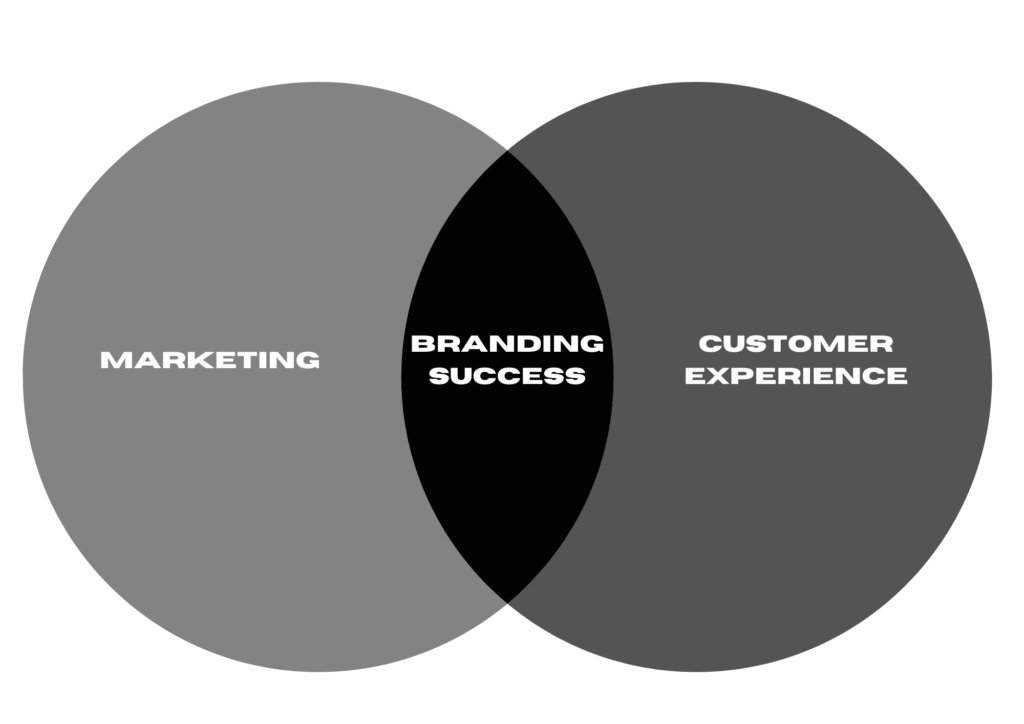If the global pandemic and economic downturn has taught us anything, it’s that the partnership between customer experience and branding success remains a critical driver in the race towards competitive advantage, business survival and long term profitability.
As customers of countless products and services daily, we all have one thing in common when it comes to impacting a brands ultimate success. As the master of our personal feelings and perceptions, we navigate our interactions with a product/service and define how we see and engage with the brands that provide them.
As a single consumer, we often feel that our actions seem somewhat insignificant to the decision-making powers who sit at the head of the corporate bench. However, we need to remember that it’s the cumulative impact of thousands of micro-second decisions like ours that steer the ship of brand and business success between failure and success.

A brand is the most valuable and visibly active asset that sets businesses, people, products, and services apart. The power to build and grow the type of brand that your customers are looking for in todays oversaturated market continues to dominate the race towards ultimate business and personal success.
Too often when we say customer experience, we immediately think of the end user. In this article we take an important look at the cumulative impact that all stakeholders have on delivering sustainable branding success.
Why Branding is so important
More than a memorable name and a visually impacting logo design, the true essence of a brand is something that has existed since the beginning of time.
Undefinable in its uniqueness to the individual beholder, brand essence represents the intangible qualities that each of us engage with. On a conscious and subconscious level, our senses interact with a multitude of brands each day.
As the heart and soul of an entity, product or service, brand essence goes beyond physical sales. It evokes feelings, defines identity, clarifies purpose, and resonates with long term success. It articulates the promises that the people behind the brand make to the people who do and will potentially use it.
Good, bad, or indifferent, brand essence shapes a person’s perception, defines a brand’s reputation and drives customer trust, loyalty and branding success.

A brand’s true essence can only come to life when it has a vehicle to deliver its message to its desired target audience.
Branding helps articulate who you are and what sets you apart from your competition. Marketing provides the necessary tools and tactics to reach, educate and engage with targeted audiences.
Marketing delivers accurate, timely and actionable insights that enable positive customer experiences which align with personal values, needs and expectations.
As the world emerges from the ‘unprecedented’ impacts of a global pandemic and the flow on effects of unstable economies, the need for organisations to remain vigilant in a customer driven marketplace, places an even greater emphasis on the need for branding success.

While success may represent different things for different people, here at Ce Marketing we believe that ‘branding success’ in that happy place where marketing and customer experiences meet and agree.
That place where what a brand represents and offers aligns with what a customer thinks, feels, needs, and wants.
That place where differentiation between competitive options becomes a clear and simple choice.

As the sands of global consumer preferences, expectations, values and choices continue to shift, finding this elusive happy place is becoming seemingly harder.
With the auction for customer loyalty on the rise, it’s not surprising that attaining and keeping customers attention is quickly becoming one of the fastest growing strategies for business growth and profitability.
The power of CX – Customer Experience
Customer experience with a brand, is not just one single interaction but rather the sum of all interactions experienced throughout the entire customer journey. How a person perceives and feels about a brand and the organisation behind it starts from the very first exposure.
Shaped by the lens of our personal beliefs, values and expectations of the world, its not surprising that personal experiences are shaped by personal perceptions.
As sensory beings, we all form opinions and judgments based on what we see and hear around us and how we process this information.
In a previous blog: Branding Success and Consumer Perception we looked at reason why two people can look at the same object and see two different things and the impact that his has on brand management.
Every brand marketing decision, be it strategic, intentional, or not, impacts customer experience.
Every time that an existing or potential customer sees a branded visual (physical product, advert, social media post, signage, etc.) or hears someone talking about a particular branded product, service or event, these situations create a touchpoint interaction.
It is the cumulative effect of these touchpoint interactions which shapes how a person engages with a brand on an ongoing basis.
As 2023 unfolds, one of the strongest keys to sustainable brand success and profitability is the ability to deliver positive, authentic, and trustworthy customer experiences.
Often, when we think about branding and marketing, we zero on in on the end user as the customer whose experience we need to optimize.
While this end user is a critical factor in achieving sales goals and sustainable business growth, they are not the only players impacting branding success.
Behind every brand story there is a multifaceted structure of both internal and external influencers impacting how a brand is represented and seen.
People making choices and decisions that alter how other people experience the brand.
Commonly, the onus for branding success falls on the direct marketing and sales teams with little thought given to the impact of other influential stakeholders.
Stakeholders such as the Board of Directors, the Executive team, corporate partners, investors, funding bodies, employees, media, industry peers, competitors and the list goes on.
The assumption that sales growth equals a strong brand reputation can mask a host of cracks in the systems. Often it’s the differing values and expectation of the various stakeholders that creates a negative impact of the brands positioning and success within the marketplace.
Just as important to building loyalty and trust with the end consumer, is the growing the need to manage and build branding success with all stakeholders.
How effective is your branding success?
At Ce Marketing, our passion is working with executive leadership in developing stakeholder management and integrated marketing strategies that are effective in optimising all customer expectations.
We appreciate that every touchpoint be it online or off plays a critical role in the development of a brands essence and overarching customer perceptions.
Through our extablisehd brand audit process, we review and refine brand management strategies to strengthen branding foundations that grow positive and ongoing customer engagement.
If you are interested in discussing and reviewing the health of your branding success, we look forward to hearing from you soon.
Author’s insights:
As an Integrated Marketing Strategist with over 20 years’ experience in business development and brand marketing, Roslyn Whately knows what it takes to develop and grow successful brands that keep businesses relevant, profitable and sustainable.


